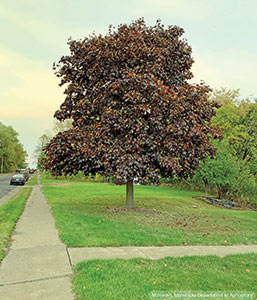The first federal count, or U. S. Census, was taken in 1790 and has been taken every 10 years since then, as mandated by the United States Constitution. The fundamental purpose of the census is to ensure congressional districts are drawn in proportion among the states in accordance with population distribution. Minnesota has eight congressional districts.
Congressional District 1 boundaries have changed to include all of Goodhue and Wabasha Counties and a portion of Brown County. LeSeur County and Cottonwood County are no longer in District 1. It now includes all of 18 southern and southeastern counties, plus portions of two more counties.
The census data is used for redistricting of congressional, legislative, and local government districts. Redistricting is necessary to recognize population changes during the previous decade. The goal is to create districts with roughly the same population. Population has tended to grow more in larger cities and their suburbs, making the geographic areas of rural districts larger. The Minnesota legislature has 134 house seats and 67 senate seats.
According to the Minnesota Constitution “the legislature shall have the power to prescribe the bounds of congressional and legislative districts.” Rep. Greg Davids explained five redistricting plans had been proposed, but none were voted on. The House and the Senate are tasked with the responsibility of drawing a new map which can be moved through the legislative process and then be approved by the governor. Any plan must stand up to court challenges.
However, when the politicians in the legislature can’t work out a compromise map, the decision is made by the Minnesota Supreme Court. The court appoints a panel of five judges, the Minnesota Judicial Branch Special Redistricting Panel, to hear redistricting cases and to then order a new map for the next 10 years based on the 2020 census. Under Minnesota Statute, the deadline for drawing a redistricting plan is February 15, 2022.
Davids said this has been the fourth redistricting since he was first elected to serve in the Minnesota house in 1991. This is not the first time the legislature has failed to work out a compromise on a new redistricting plan.
Davids needed 2,400 more people in his district to make it whole, to make it roughly equal in population to the other house legislative districts in the state. His district will be 26B, consisting of all of Fillmore and Houston Counties and four townships of Mower County on its eastern border. The Mower County portion of the district includes Bennington Township, Frankford Township, LeRoy City, LeRoy Township, Racine City and Racine Township. It is the largest district in southeast Minnesota geographically. The total population in the district will be 42,834. Senator Jeremy Miller’s senate district 26 will have a population of 85,003. It includes house district 26B and house district 26A (a large part of Winona County including the city of Winona).
Once legislative district boundaries are established, local units of government must also redistrict apportioned by population. Minnesota’s population grew on the whole but didn’t gain or lose a congressional seat.
Davids believes the courts did a fair redistricting job, as fair as it could be. The courts don’t want to be accused of acting politically. Davids feels he is lucky to serve this area of small towns in an agricultural district. He referred to himself as a “rural guy.” The district now includes LeRoy, which puts the LeRoy/Ostrander school district together in one district. Davids owns a farm two miles from the Mower County border in Sumner Township. He said he has fond memories of the area. “I know Racine used to represent LeRoy and Racine. Some representatives will not know some of the folks within their new district boundaries, but for me it is like going home.”
Davids said he has county commissioners in his district that he can work with, even though they don’t agree on everything.
With the new maps there are some districts where there will be Republican on Republican or Democrat on Democrat or two incumbents in the same district. Representatives must live in the district they serve for at least six months and a day. There are some open districts.
When asked, if he thinks the pandemic may have contributed to a possibly less complete or accurate census, Davids replied, “Maybe it did in some metro areas, but not so much in rural areas.”
This 2022 legislative session is supposed to be a bonding year. Davids said he was in favor of bonding for wastewater plants, roads, bridges, and water services, but not fire halls, city halls, ambulance sheds, and jails. Many cities and counties have already spent their own funds on fire halls, city halls, ambulance sheds and jails. Davids said local government facilities should be all locally financed, or they should be all state financed; to be fair it should be all or none. Most states do not tax Social Security payments; he supports a bill to eliminate that tax for Minnesotans. With the state’s $9.25 billion surplus, he supports a cut in income tax rates. The federal money that has come into the state during the pandemic is “one time money.”


Leave a Reply